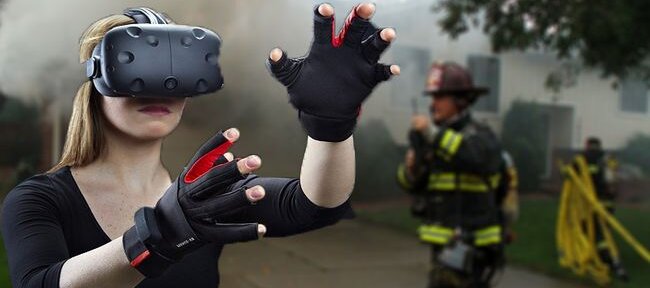The solution generates a controlled virtual environment quite similar to real evacuation and emergency situations. It seeks to train "Brigadistas" (first response agents) in change of guiding the evacuation of the people from each building while ensuring the bindingness to the protocol and safety measures in case of emergency. The innovation was trialed in an evacuation mock-up in the Presidency building.
Innovation Summary
Innovation Overview
Virtual Reality (VR) in combination with other technologies such as the Metaverse have provided to be a reliable tool for resemble real-life situations. The project is novel among the Uruguayan public administration as it emerged from a proof of technology to a fully functional proof of concept to trial new solutions and approaches to be implemented by the first response brigade members. With the use of these novel technologies we created a replica of real-life situations where we built a framework under the concept of Digital Twin. The project emphasizes the uses of VR in dissemination and orientation actions, seeking to publicize the work done and promoted by the agents that can be mainstreamed to other teams in the public administration.
Innovation Description
What Makes Your Project Innovative?
We created cases of training with VR and incorporating gamification concepts. This is the first of its kind example in Uruguay applied to the emergency response domain and, in particular, to the public and institutional infrastructure. Immersed in a cycle of technological surveillance we created a framework of the organization's own work. There was several exchanges between the team of developers, brigades, firefighters, trainers and other stakeholders to contribute to shape the digital twin.
Innovation Development
Collaborations & Partnerships
Our main collaborators were the trainers in charge of conducing the first emergency and crisis response courses, as the content was to specifically target training aspects. Additionally, three groups of stakeholders are also relevant:
- firefighters and brigade members to validate the interaction within the virtual experience,
- development team as part of a development provider of the implementer private company,
- officials: technology area within Agesic and Presidency (Human Resources, Building Management, Security)
Users, Stakeholders & Beneficiaries
The beneficiaries were the trainers and brigadistas.
Innovation Reflections
Results, Outcomes & Impacts
The greatest impact can be foreseen in the possibility of adapting VR technology and gamification methods to the needs of the emergency response teams by incorporating different adverse situations and focusing on the safeguard of all the stakeholders involved in the solution and the trainings. This in turn has had impacts on three main aspects:
- Possibility of saving funds, each virtual practice does not require to allocate public funds
- Create and evaluate content based on specific roles: Firefighters (trainers), Brigadiers (Trained), officials and people who visit the Executive Tower.
- Reduction of the time dedicated to the tour of the Tower, with the possibility of interacting with all the objects necessary for the movement extinguishers, vests, helmets, etc. (if necessary).
Challenges and Failures
The main challenges of the project is associated with the timing of equipment acquisition and solution development.
Conditions for Success
Several conditions need to be in place beforehand:
- Infrastructure and support services: without virtual reality equipment it is difficult to move forward.
- Leadership and guidance: without a team with sufficient drive it would never have been achieved.
- Human and financial resources: Working on minimum viable products that can show the value of the proposal and increase the motivation to continue with the plan.
- Personal values and motivation: Without teamwork nothing is achieved, always highlight the contribution of all team members, which allows to stimulate the desire for a successful project.
Replication
The idea of virtual training for brigade members is replicable, although it requires development to adjust to each specific virtual environment for which it is to be applied. However, it is possible to reuse the modeling built in this solution for other projects.
Lessons Learned
During the design phase it was necessary to focus on the functional requirements and a specific descriptive script for the different environments. With agile methods and a design monitoring along the way, we sought to iterate until obtaining a first minimum viable product where the risks and opportunities for using VR, an the applications too are visible.
Status:
- Implementation - making the innovation happen
- Diffusing Lessons - using what was learnt to inform other projects and understanding how the innovation can be applied in other ways
Open Government Tags
enablersDate Published:
21 November 2022


